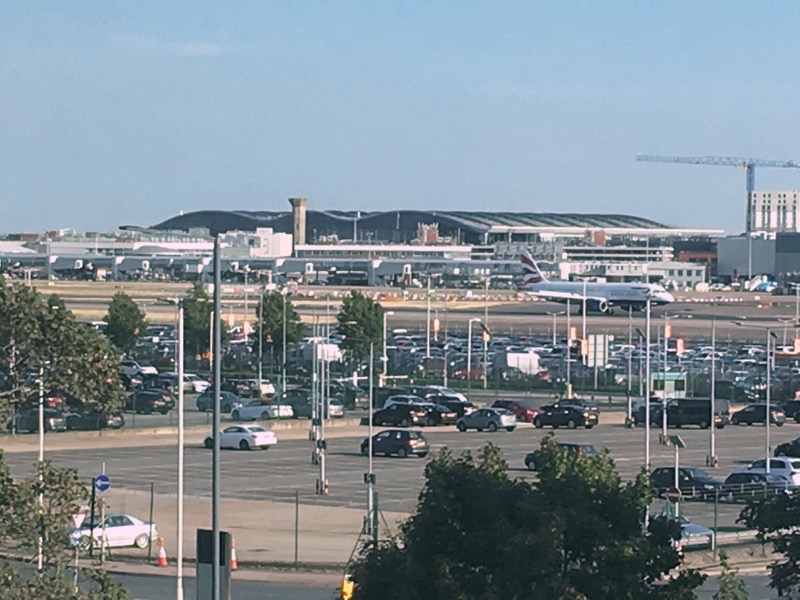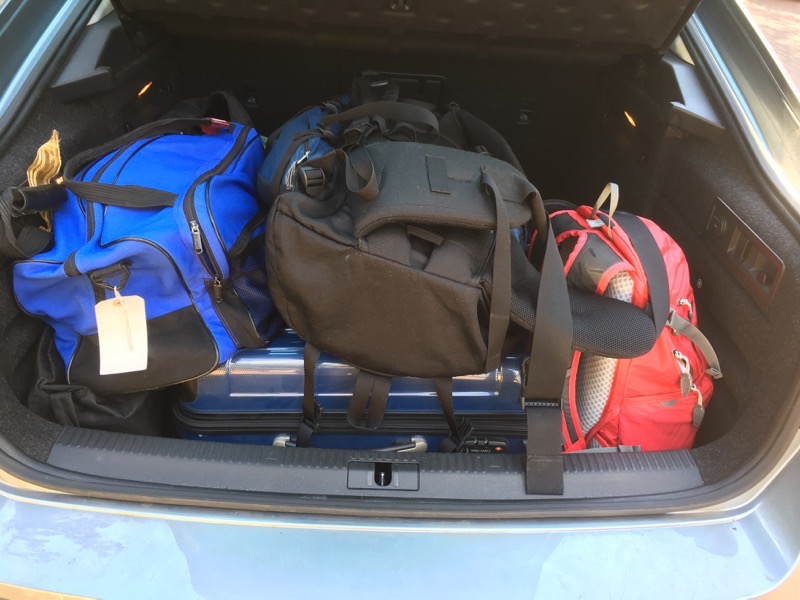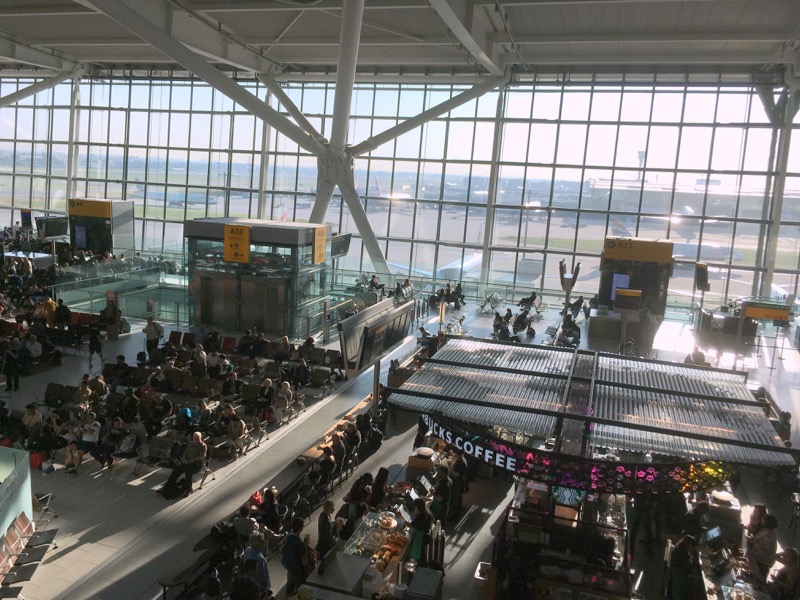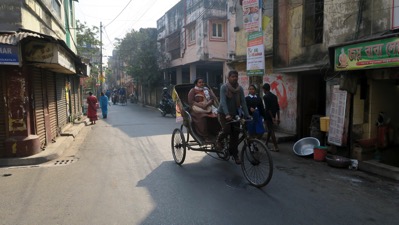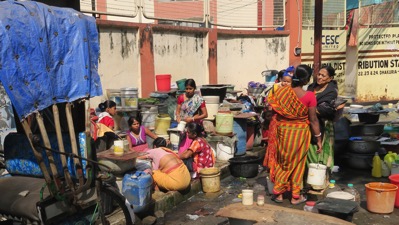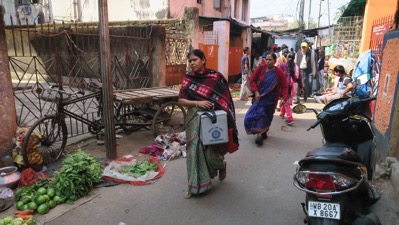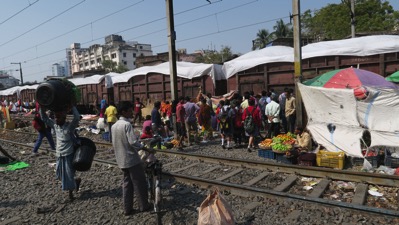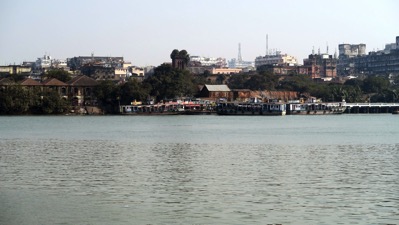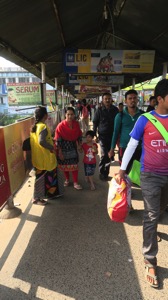From our perspective, this NID is intended to follow much the same format as earlier NIDs: we fly to Delhi for a briefing and for most of the team to assemble; we then go to Kolkata and the following day (Saturday) we take part in some Polio related activity; Sunday is the day of the NID; Monday is followup and then sometime afterwards, we return to Delhi and the UK.
Experience has taught us that going on a NID without allowing some time to get over the jet lag of India is very tiring, hence we are going out to Delhi a few days early. And this time we are making the journey even easier by going on a day-time flight rather than an overnight one.
So, as has been the case for the past few years, I start this blog entry with a badly taken selfie of us on our fairy empty Air India plane at Heathrow.

We arrived just before India Day and hence a lot of Delhi was under lock-down and as expected, the view of Delhi from our hotel room was showing the impact of the early year smog which can make living there quite unhealthy.

Over the next couple of days, most of the 100 UK Rotarians taking part in the NID arrived and we all attended the usual pre-NID briefing session which did not tell us much that we did not already know but did indicate that during the past 12 months, India had made some further progress towards replacing Live Polio Vaccine given orally with the Inert Polio Vaccine in an injectable form.
Other than the slowest imaginable drive back to the airport to get our flight to Kolkata due to India Day traffic, getting there was unremarkable and not needing comment.
Our hosts in Kolkata were many of the Kolkata Rotary Clubs (there are a lot) and Saturday was partly taken up with a briefing meeting from them

which also gave us the opportunity to demonstrate to them that we were

serious about being actively involved in Polio vaccination - "we have not come to watch but have come to do".

For us the day finished with seeing sunset on the Hoogly River in Kolkata.
Sunday National Immunisation Day

After the usual group photograph of the team in our yellow shirts,

we divided into small teams and set off to vaccinate.
Because I was the team leader, the Rotary Clubs there wanted to spend much of the day showing us what they were doing rather than putting us to work
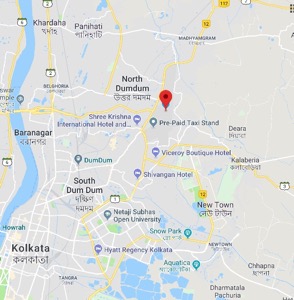
and the area we went to was north of the airport.
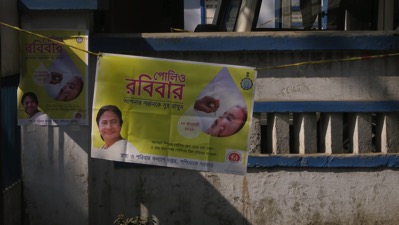
The immunisation process has changed a lot over the past few years and here I thought that there were far fewer of the posters I had grown used to seeing on display around the city.

The issue of poor sanitation and the increased risk this creates for Polio to make a come back was still evident

and the general poverty in some of the areas we went to on this day was not better or worse than we have seen before.

What has changed is that a lot of the vaccination saw took place in health centres. The establishment of these centres is central to the policy of

the Indian Government to move away from the regular use of live polio vaccine
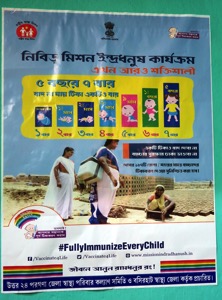
and to incorporate it into a programme of fully vaccinating every child against a range of infant diseases.

at birth and at specific dates in their early years. There has also been a significant move towards the establishment of teams of health workers such as these who staff local health centres and deal with all aspects of children’s health.

Not all of the health centres we visited were as grand as the first one, this one above was simply a room at the side of a building.

However, within it the vaccination process took place in the usual way.

Occasionally we came across a class of children awaiting vaccination

and we were given the occasional opportunity

to vaccinate

although without the pressure of numbers of children waiting their turn which we came across in earlier years.

Although the same method of recording the numbers of children vaccinated was used as in previous years, at all of the health centres we went to, the workers said they knew exactly how many children they were expecting and where they lived.
Through the use of Founation Grants, local Rotary Clubs have been very active

in establishing their own specialist health facilities


and this one was opened as an eye clinic

which was of particular interest to Mrs Harvey

because she recently had had Cataract Surgery on one eye.

And we finished this first day with fresh coconut juice from a coconut purchased from a road side stall, not something you can do where we live.
